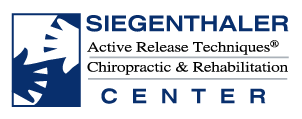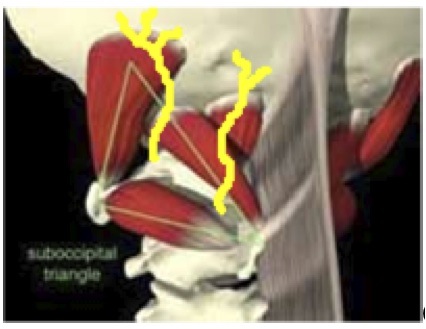Tension Headache
from Wikipedia, the free encyclopedia
A tension headache (renamed a tension-type headache by the International Headache Society in 1988) is the most common type of primary headache. The pain can radiate from the lower back of the head, the neck, eyes, or other muscle groups in the body. Tension-type headaches account for nearly 90% of all headaches. Approximately 3% of the population has chronic tension-type headaches.[2]
Signs and symptoms
Tension-type headache pain is often described as a constant pressure, as if the head were being squeezed in a vice. The pain is frequently bilateral which means it is present on both sides of the head at once. Tension-type headache pain is typically mild to moderate, but may be severe.
Frequency and duration
Tension-type headaches can be episodic or chronic.[3] Episodic tension-type headaches are defined as tension-type headaches occurring fewer than 15 days a month, whereas chronic tension headaches occur 15 days or more a month for at least 6 months. Tension-type headaches can last from minutes to days, months or even years, though a typical tension headache lasts 4–6 hours.
Causes & Treatment
Our treatment of tension headaches focuses on muscles located in the sub occipital triangle, and the associated nerves.
Through Active Release Techniques, we work to eliminate adhesions both within the musculature, and between the nerves and muscles. This alleviates the compression on the nerve that is causing the headaches. This allows us to eliminate the cause of the tension headaches.
Related Articles:
ART – Active Release Techniques
Tendonosis vs. Tendonitis
^ Rosted P, Jørgensen A, Bundgaard M (2010). “Temporomandibular dysfunction can contribute to aggravation of tension-type headache: a case report”. Acupunct Med 28 (3): 154–5. doi:10.1136/aim.2010.002469. PMID 20813814.
^ Rasmussen BK, Jensen R, Schroll M, Olesen J (1991). “Epidemiology of headache in a general population—a prevalence study”. J Clin Epidemiol 44 (11): 1147–57. PMID 1941010.
^ Headache Classification Subcommittee of the International Headache Society (2004). “The International Classification of Headache Disorders: 2nd edition”. Cephalalgia 24 (Suppl 1): 9–160. doi:10.1111/j.1468-2982.2004.00653.x. PMID 14979299. as PDF
^ Muscle Contraction Tension Headache at eMedicine
^ Ashina M, Lassen LH, Bendtsen L, Jensen R, Olesen J (January 1999). “Effect of inhibition of nitric oxide synthase on chronic tension-type headache: a randomised crossover trial”. Lancet 353 (9149): 287–9. doi:10.1016/ S0140-6736(98)01079-4. PMID 9929022.
^ Ashina S, Bendtsen L, Ashina M (December 2005). “Pathophysiology of tension-type headache”. Curr Pain Headache Rep 9 (6): 415–22. PMID 16282042.
^ Pielsticker A, Haag G, Zaudig M, Lautenbacher S (November 2005). “Impairment of pain inhibition in chronic tension-type headache”. Pain 118 (1-2): 215–23. doi:10.1016/j.pain.2005.08.019. PMID 16202520.
^ Jackson JL, Shimeall W, Sessums L, et al. (2010). “Tricyclic antidepressants and headaches: systematic review and meta-analysis”. BMJ 341: c5222. doi: 10.1136/bmj.c5222. PMC 2958257. PMID 20961988.
^ Verhagen AP, Damen L, Berger MY, Passchier J, Koes BW (April 2010). “Lack of benefit for prophylactic drugs of tension-type headache in adults: a systematic review”. Fam Pract 27 (2): 151–65. doi:10.1093/fampra/cmp089. PMID 20028727.
^ Bendtsen L, Jensen R (May 2011). “Treating tension-type headache — an expert opinion”. Expert Opin Pharmacother 12 (7): 1099–109. doi: 10.1517/14656566.2011.548806. PMID 21247362.
^ Yurekli VA, Akhan G, Kutluhan S, Uzar E, Koyuncuoglu HR, Gultekin F (February 2008). “The effect of sodium valproate on chronic daily headache and its subgroups”. J Headache Pain 9 (1): 37–41. doi:10.1007/s10194-008-0002-5. PMID 18231713.
^ Nestoriuc Y, Rief W, Martin A (June 2008). “Meta-analysis of biofeedback for tension-type headache: efficacy, specificity, and treatment moderators”. J Consult Clin Psychol 76 (3): 379–96. doi:10.1037/0022-006X.76.3.379. PMID 18540732.
^ Rains JC (May 2008). “Change mechanisms in EMG biofeedback training: cognitive changes underlying improvements in tension headache”. Headache 48 (5): 735–6; discussion 736–7. doi:10.1111/j.1526-4610.2008.01119_1.x. PMID 18471128.
^ Linde K, Allais G, Brinkhaus B, Manheimer E, Vickers A, White AR (2009). “Acupuncture for tension-type headache”. Cochrane Database Syst Rev. 1: CD007587. doi:10.1002/14651858.CD007587. PMC 3099266. PMID 19160338.
^ Fernández-de-las-Peñas C, Alonso-Blanco C, Cuadrado ML, Miangolarra JC, Barriga FJ, Pareja JA (2006). “Are manual therapies effective in reducing pain from tension-type headache?: a systematic review”. Clin J Pain 22 (3): 278–85. doi:10.1097/01.ajp.0000173017.64741.86. PMID 16514329.
^ Biondi DM (2005). “Physical treatments for headache: a structured review”. Headache 45 (6): 738–46. doi:10.1111/j.1526-4610.2005.05141.x. PMID 15953306.
^ Bronfort G, Nilsson N, Haas M et al. (2004). Non-invasive physical treatments for chronic/recurrent headache. In Brønfort, Gert. “Cochrane Database of
Systematic Reviews”. Cochrane Database Syst Rev (3): CD001878. doi: 10.1002/14651858.CD001878.pub2. PMID 15266458.
^ Ernst E, Canter PH (2006). “A systematic review of systematic reviews of spinal manipulation”. J R Soc Med 99 (4): 192–6. doi:10.1258/jrsm.99.4.192. PMC 1420782. PMID 16574972.
^ Vos, T (2012 Dec 15). “Years lived with disability (YLDs) for 1160 sequelae of 289 diseases and injuries 1990-2010: a systematic analysis for the Global Burden of Disease Study 2010.”. Lancet 380 (9859): 2163–96. PMID 23245607.
Related Articles:

